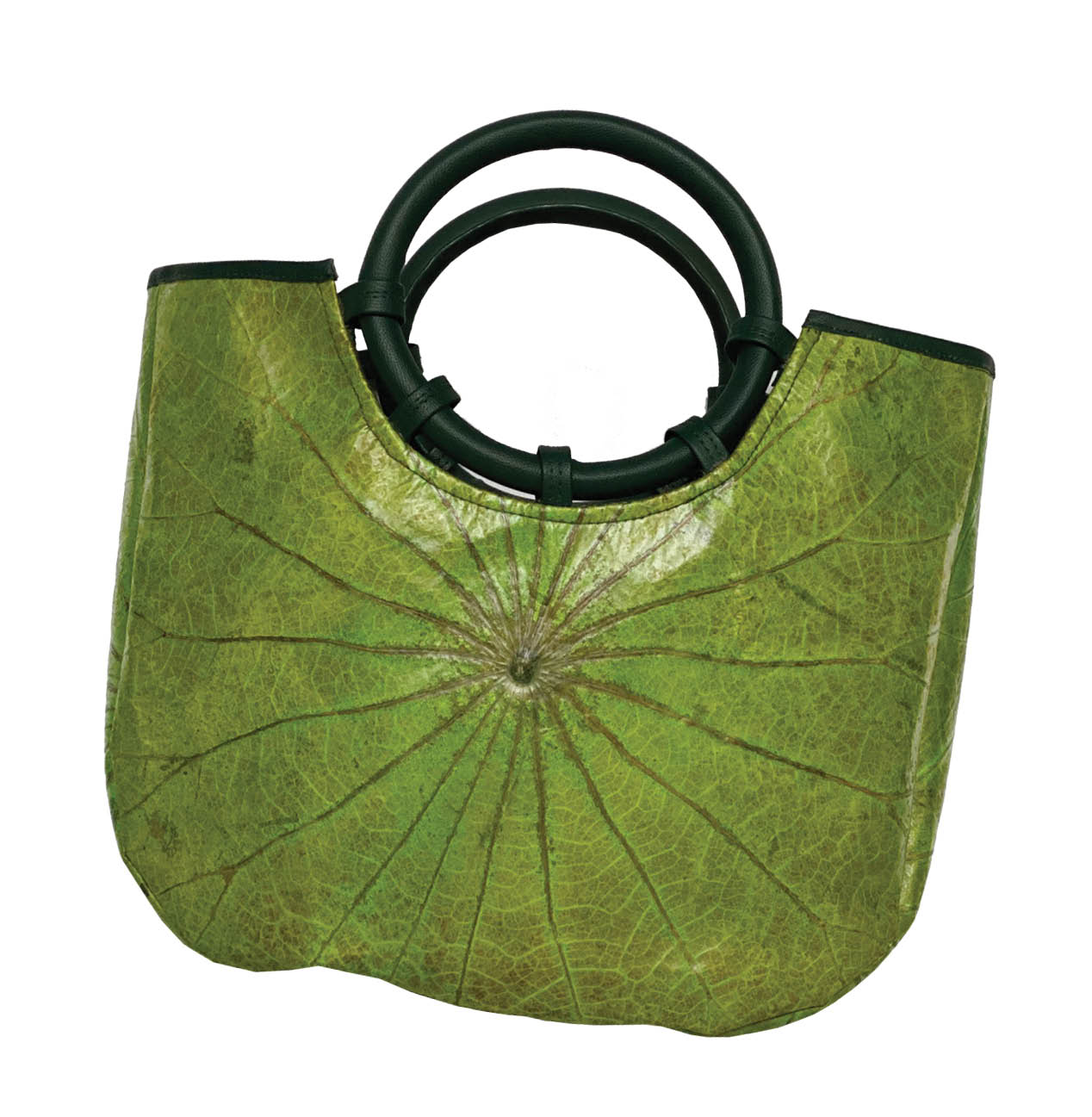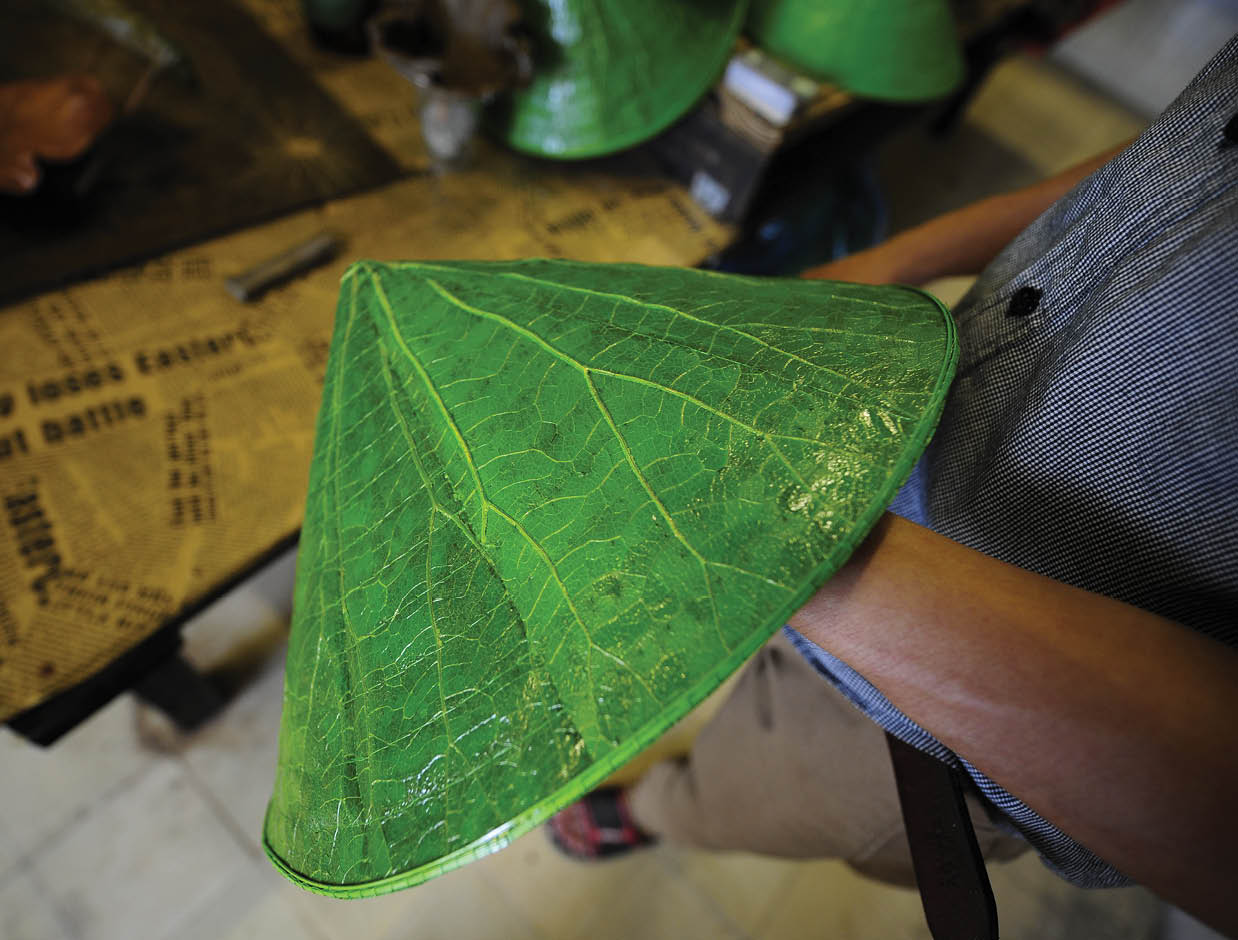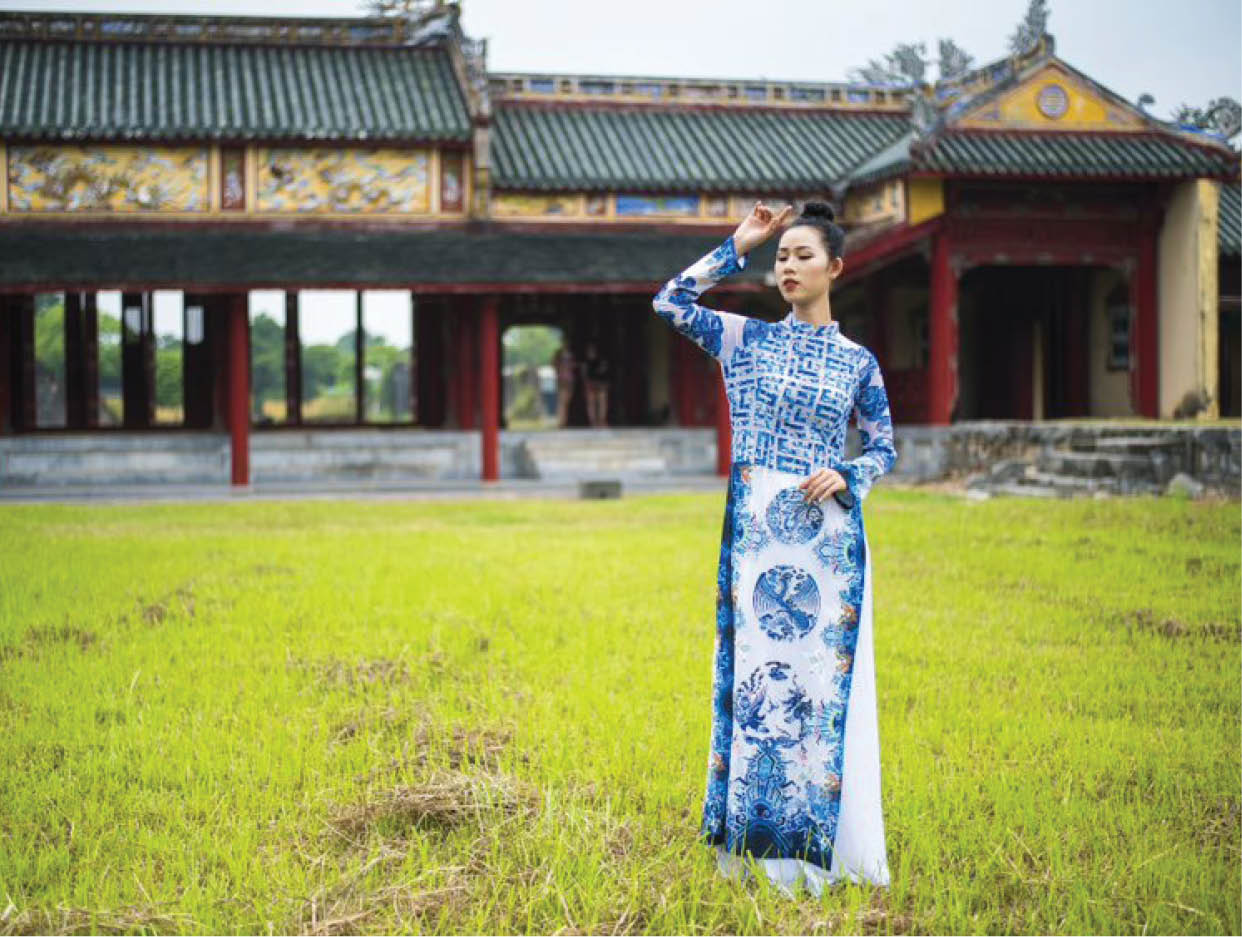
Lotus bags - a souvenir product well received by the market
Unique and strange
Sen Thao Company Limited is a brand of lotus leaf conical hats, successfully researched and created by Nguyen Thanh Thao.
After 3 years attending Hue handicraft market, the brand has gradually affirmed its name with the consumption of about 2,000 pieces per month.
From the conical hat retaining the lotus color, the company has created dozens of colorful lotus conical hat models. Techniques of coloring and blending leaves ensure that the hats are both durable, resistant to sunlight and rain, and retain color. However, with its bulky size, lotus conical hats face many difficulties in transport, especially as souvenirs for tourists.
Maintaining traditional products and developing more handbags as souvenirs is a new direction that Sen Thao has deployed since the beginning of 2020 when the COVID-19 epidemic broke out. The demand for online consumption increased, while paintings and lotus conical hats are still difficult to transport.
After 2 months of research and modeling, currently, 70 bags designed from lotus leaf material have been launched to the market and are favored by tourists. The advantages of the lotus bag are neat, compact, foldable, elastic and water resistant.

Lotus conical hat, a popular souvenir product
Nguyen Thanh Thao said that improving models and changing production are what Sen Thao pursues. With 2 main product lines: art and market, in which art products include paintings, lotus conical hats; the market line that favors durability and mass production are handbags and accessories.
The bags are designed according to age segments, supplied to the markets of provinces and cities in the country and in some foreign countries such as Germany, France and the US.
In addition to lotus bags, banana leaf bags will be Sen Thao's next research product to complete the collection of souvenirs and gifts serving the tourism market.
“After completing the wish to create a collection of gifts from lotus leaf material, Sen Thao will research and invest in the project "Hue lotus cuisine” to exploit the potentials and strengths not only from lotus leaves, but also from lotus root and lotus flower,” Thanh Thao shared.
Choosing Ao dai as a gift from Hue
The designer Viet Bao, Director of Viet Bao QB One Member Limited Company, Vice Chairman of the Provincial Fashion and Embroidery Association voiced his concerns: ‘Hue is a tourist city and aims to become the capital of Ao dai, but for a long time Hue is just a consumption market for products of other provinces and cities, including Ao dai. The shops are importing ao dai fabric and tailor it, and then attach Hue Ao dai brand.

Ao dai of the designer Viet Bao
From this concern, in recent years, Viet Bao has focused on ao dai’s fabrics and aims to turn Ao dai into Hue gifts. Along with designing fabric, patterns and tailoring, the production unit regularly organizes art programs with Ao dai performances to promote its products.
According to the designer Viet Bao, through market survey, exploring customers' tastes, especially tourists, the production unit imported raw fabrics, white billets, and then used digital printing and dyeing technology to print typical paintings of Hue onto the silk Ao dai.
The combination of Ao dai and painting increases the aesthetic and cultural value of products from painted enamels motifs to royal architectural heritage. On satin, brocade or chiffon silk, the motifs are meticulously designed, creating a unique character for Hue ao dai.
Exploring reverse painting
Along with embroidery, lacquer, wood or lotus products, the souvenir market has added a new line of paintings created by the painter Duong Van Kinh, Hai Duong Fine Arts Facility, Hue City. It is mirror painting.
Discovering that mirror paintings, once used by kings of the Nguyen Dynasty to hang at tombs and temples, are now a lost art, Duong Van Kinh and his associates went on field trips to the stone temples, tombs and the idea of mirror painting has been came up with.
Unlike traditional paintings, mirror paintings are reverse painting lines (painted on the back), so it requires technique, ingenuity and rich imagination. The artist must imagine the other side of the glass, especially visualizing the picture and being able to change the shape while painting.
According to Duong Van Kinh, to do mirror painting, the artist must carefully calculate each technical parameter, integrate light depth and color schemes which are different from traditional painting. The artist combines color by using transparent colors, picking up the light effects of the colors and drawing layers, one by one.
Thanks to the color scheme to create light effects, mirror paintings are always shimmering in an interior space. It does not get moldy and so it is suitable for the weather in Hue. In addition to the line of paintings used for interior decoration, hanging at tombs and monuments, the company has designed small and light picture frames for souvenirs and gifts, so they are well received by visitors.
At the handicraft design contest in 2020 organized by the Department of Industry and Trade, one of the important criteria to win the prize is the size and weight of the finished product. It must be compact enough for convenient packaging and easy transportation. This is also the target of production units and artisans when producing souvenirs and gifts, meeting the market demand.
Story: Huong Thanh
Photos: Hoang Hai - Khanh Thu
